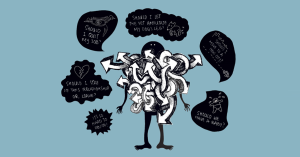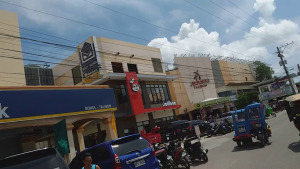Last October 15, 2015 was exactly two years from the destructive M7.2 earthquake that occurred in Bohol.
Many of the individual families have rebuilt or reconstructed their dwellings and houses. The roads and highways have been restored and transportation is almost back to normal except for few major bridges that are yet temporary in category.
However the heritage houses, buildings, and churches are still far from being rebuilt or restored.
Tricky Situation
The two common natural calamities that usually occur in Bohol are typhoons and earthquakes. To design a building or structure to withstand these two natural forces is quite tricky.
To withstand strong wind forces from typhoons you need to make your building rigid. However, rigid structures are the first to be “attacked†by earthquake forces.
Therefore to design for these two forces, you need to have your building rigid enough to resist wind forces but flexible enough to dissipate the earthquake forces. These two requirements are the reasons why Japan has not yet constructed tall skyscrapers. If they will design for strong winds from typhoons the building will be easily destroyed by earthquakes. If they will design for earthquake forces, the building will be easily destroyed by wind forces from typhoons.
Situation In Bohol
The best material to resist earthquake forces is wood. It has a damping factor of 10%. Reinforced concrete has a damping factor of 5% and steel has a damping factor of 2%. It means that steel will vibrate faster during earthquakes but this weakness is compensated by its high strength.
After the earthquake there was a spate of flimsy building construction. For sure these buildings will not be destroyed by earthquakes but it can be easily blown away by winds from a typhoon. The cheapest way to counteract wind forces is to provide bracings or buntings attached to critical locations of the building and anchored to the ground. I don’t know why these wire bracings are not provided.
In a typhoon the most dangerous effect of the wind is not the slamming effect of the wind but the vacuum effect of the wind.
In a typhoon or 120 miles per hour or 200 kilometers per hour wind the direct slamming forces of the wind is about 38 pounds per square foot. If your house is of low height, the surrounding vegetations can absorb most of the slamming effect of the wind.
However, when the winds pass over your house it will produce a vacuum effect and the air within your house will tend to follow the passing wind. The outward force of a vacuum is about 2,117 pounds per square foot. The roof and walls could not resist the vacuum force. So during typhoons do not close your windows and doors so that there will be not be a vacuum effect.
Rebuild, Reconstruct, Restoration
After the Yolanda Super Typhoon in Leyte, President P-Noy told his men to rebuild or reconstruct better and stronger structures.
The words rebuild and reconstruct are synonyms. The only difference is that when you rebuild, it will be in another location. When you will reconstruct it will be in the same location.
However, in Bohol, the catch-word is “restoration†of heritage buildings. To restore means to bring to its former shape, strength, form, etc. It means that if you will restore the Loon Church, Maribojoc Church, Baclayon Church, etc. you will bring it back to its former situation. But the former situation was destroyed by an earthquake! Then the restored structure will be destroyed by the next earthquake!
At present the belfry or bell tower of Baclayon Church is in the process of being “restoredâ€. What I saw is the use of cement grout. Cement grout, unlike coral bricks, will always crack. Therefore the finished product will be full of cracks. Even if a new technology will be used it will be of little use. The existing bricks are already very weak. It has been subjected to resonance, similar to what pulverize the Loon Church.
The best way is to reconstruct with the objective that the new structure will look like the original. The four phases of the moon shall still be in each face of the tower. The gargoyles will still be found at the edges of the tower. [Note: Read about “Bahometâ€.] These are “trademarks†of the operative Freemasons who constructed the tower. [Note: The Freemasons today are called Speculative Freemasons.]
I don’t know what the Catholic Church authorities and the governments agencies have agreed upon. In my own opinion, reconstruction and not restoration is the best option. (By Jes B. Tirol)





Be First to Comment